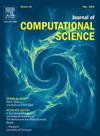A leading adaptive activation function for deep reinforcement learning
IF 3.1
3区 计算机科学
Q2 COMPUTER SCIENCE, INTERDISCIPLINARY APPLICATIONS
引用次数: 0
Abstract
The activation function provides deep reinforcement learning with the capability to solve nonlinear problems. However, traditional activation functions have fixed parameter settings and cannot be adjusted adaptively based on constantly changing environmental conditions. This limitation frequently leads to slow convergence speed and inadequate performance of trained agents when confronted with highly complex nonlinear problems. This paper proposes a new method to enhance the ability of reinforcement learning to handle nonlinear problems. This method is mainly divided into two parts. Firstly, an activation function parameter initialization strategy based on environmental characteristics is adopted. Secondly, the Adam algorithm is used to dynamically update the activation function parameters. The activation function proposed in this paper is compared with both traditional activation functions and state-of-the-art activation functions through two experiments. Experimental data show that compared to ReLu, TanH, APA, and EReLu, its convergence speed in DQN tasks is improved by 3.89, 1.29, 0.981, and 2.173 times, respectively, and in SAC tasks, it is improved by 1.504, 1.013, 1.017, and 1.131 times, respectively. The results demonstrate that when the agent utilizes LaTanH as the activation function, it exhibits significant advantages in terms of convergence speed and performance and alleviates the problems of bilateral saturation and gradient vanishing.
一个领先的自适应激活函数用于深度强化学习
激活函数为深度强化学习提供了解决非线性问题的能力。然而,传统的激活函数具有固定的参数设置,不能根据不断变化的环境条件进行自适应调整。当面对高度复杂的非线性问题时,这种限制往往导致训练后的智能体收敛速度慢,性能不佳。本文提出了一种提高强化学习处理非线性问题能力的新方法。该方法主要分为两部分。首先,采用基于环境特征的激活函数参数初始化策略;其次,采用Adam算法对激活函数参数进行动态更新;通过两个实验,将本文提出的激活函数与传统的激活函数和最新的激活函数进行了比较。实验数据表明,与ReLu、TanH、APA和EReLu相比,其在DQN任务中的收敛速度分别提高了3.89倍、1.29倍、0.981倍和2.173倍,在SAC任务中的收敛速度分别提高了1.504倍、1.013倍、1.017倍和1.131倍。结果表明,采用LaTanH作为激活函数时,智能体在收敛速度和性能上具有显著优势,缓解了双侧饱和和梯度消失的问题。
本文章由计算机程序翻译,如有差异,请以英文原文为准。
求助全文
约1分钟内获得全文
求助全文
来源期刊

Journal of Computational Science
COMPUTER SCIENCE, INTERDISCIPLINARY APPLICATIONS-COMPUTER SCIENCE, THEORY & METHODS
CiteScore
5.50
自引率
3.00%
发文量
227
审稿时长
41 days
期刊介绍:
Computational Science is a rapidly growing multi- and interdisciplinary field that uses advanced computing and data analysis to understand and solve complex problems. It has reached a level of predictive capability that now firmly complements the traditional pillars of experimentation and theory.
The recent advances in experimental techniques such as detectors, on-line sensor networks and high-resolution imaging techniques, have opened up new windows into physical and biological processes at many levels of detail. The resulting data explosion allows for detailed data driven modeling and simulation.
This new discipline in science combines computational thinking, modern computational methods, devices and collateral technologies to address problems far beyond the scope of traditional numerical methods.
Computational science typically unifies three distinct elements:
• Modeling, Algorithms and Simulations (e.g. numerical and non-numerical, discrete and continuous);
• Software developed to solve science (e.g., biological, physical, and social), engineering, medicine, and humanities problems;
• Computer and information science that develops and optimizes the advanced system hardware, software, networking, and data management components (e.g. problem solving environments).
 求助内容:
求助内容: 应助结果提醒方式:
应助结果提醒方式:


